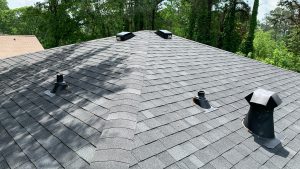
The condition of your roof is one of the most heavily weighted factors in home insurance pricing, renewal decisions, and claim approval. Insurers treat the roof as the first line of defense against weather, water damage, and structural deterioration. Because water damage claims are among the most expensive, the roof’s age and condition directly affect your risk score.
1. Why the Roof Matters So Much in Insurance
A damaged or aging roof increases the likelihood of:
- Leaks
- Mold
- Interior damage
- Foundation rot
- Electrical hazards
Since one roof failure can lead to multiple expensive claims, insurers monitor roof condition closely and may:
- Raise premiums
- Limit coverage
- Require repairs
- Non-renew the policy if the roof is considered too high-risk
2. The Key Roof Attributes Insurers Evaluate
A. Roof Age
This is usually the first question underwriting checks.
| Roof Age | Insurance Reaction |
|---|---|
| 0–10 years | Best pricing; considered low-risk |
| 11–15 years | Still insurable, but closer scrutiny |
| 16–20+ years | Often triggers inspection or documentation |
| 20–30+ years | Many insurers non-renew, regardless of condition |
Important:
Even if the roof looks fine, insurers consider anything near 20+ years high-risk because failure probability increases sharply.
B. Roof Material
Different materials have different life expectancy and failure patterns:
| Material | Avg. Lifespan | Risk/Insurance Impact |
|---|---|---|
| Asphalt Shingle | 15–30 yrs | Most common; cheap to replace; moderate risk |
| Metal Roof | 40–70 yrs | Low-risk; often gets insurance discounts |
| Tile / Slate | 50–100+ yrs | Durable but very expensive to replace → higher coverage requirement |
| Wood Shake | 20–40 yrs | High fire risk → many insurers charge more or refuse |
| Flat Roof (Membrane) | 10–25 yrs | High leak risk → more inspections & higher deductibles |
C. Roof Shape & Complexity
| Shape | Risk Effect |
|---|---|
| Simple gable or hip roof | Easier & cheaper to repair → lower cost |
| Multi-gable / complex rooflines | More leak points → higher premiums |
| Flat roof | Water pooling risk → higher inspection requirements |
3. Visible Condition Issues That Trigger Insurance Action
Adjusters and inspectors look for:
| Visible Problem | Risk Reasoning |
|---|---|
| Missing shingles | Active vulnerability to leaks |
| Curling / buckling shingles | Roof near end of life |
| Moss, algae, or plant growth | Indicates moisture retention |
| Soft spots or sagging decking | Structural deterioration |
| Rusted flashing / vents | Weak seal points, causes leaks |
| Stains on ceilings inside the home | Signs of ongoing water intrusion (red flag) |
These conditions can lead to:
- Coverage limits
- Required repairs
- Non-renewal notices
4. How Roof Condition Affects Your Premium
| Condition | Insurance Impact |
|---|---|
| New or recently replaced roof | Lower premiums + possible discount |
| Well-maintained older roof | Normally insurable with inspection proof |
| Deteriorating or unverified roof | Higher premiums or mandatory repairs |
| Roof near end of life (18–25 years) | Often causes non-renewal even if no leaks are visible |
5. How to Protect Your Policy
To avoid being dropped or overpaying:
- Keep dated photos of your roof, taken yearly.
- Get a roofing contractor inspection report every 1–3 years.
- Clean gutters and remove debris to prevent water pooling.
- Trim back trees to prevent roof impact and moss growth.
- Keep receipts and documentation of repairs or replacement.
If your insurer flags your roof:
Call underwriting and say:
“I would like to submit a certified roof inspection showing the roof has remaining life expectancy and is watertight.”
A roof condition certification can reverse a non-renewal in many cases.
Summary
| Roof Factor | Why It Matters | Insurance Effect |
|---|---|---|
| Age | Predicts failure likelihood | Older roof → higher premiums / possible non-renewal |
| Material | Impacts durability and replacement cost | Some materials lower or increase cost |
| Design Complexity | Affects number of leak points | Complex roofs cost more to insure |
| Visible Condition | Shows maintenance and risk behavior | Poor condition → required repairs / policy cancellation |
